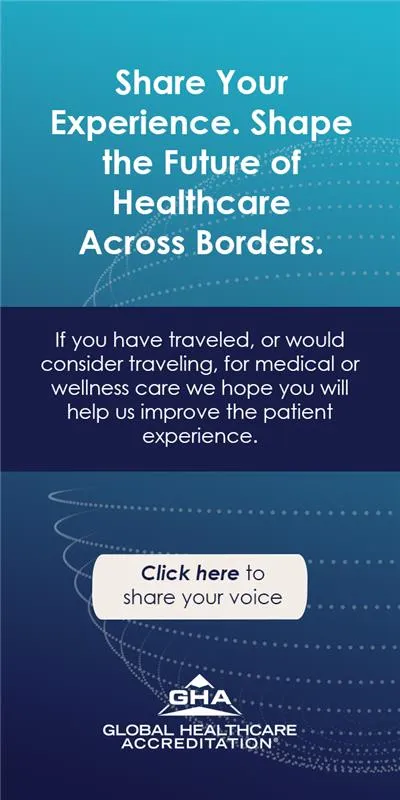Wound healing has traditionally relied on conventional treatments, such as antibiotics, wound dressings, and surgical interventions. However, technological advancements are reshaping the field, with artificial intelligence (AI) playing a pivotal role in enhancing wound care. AI-driven solutions offer improved diagnostics, real-time monitoring, and personalized treatment plans, leading to faster healing and better patient outcomes.
This article explores how AI-powered wound healing is transforming global healthcare, the benefits it provides, and the challenges it faces in its adoption.
The Role of AI in Wound Healing
AI is revolutionizing wound care by integrating machine learning, computer vision, and predictive analytics. These technologies assist medical professionals in assessing wounds more accurately and personalizing treatment plans based on real-time data.
1. AI-Powered Diagnostics and Imaging
AI-driven imaging tools use computer vision and deep learning to analyze wound characteristics, such as size, depth, tissue composition, and infection risk. Advanced algorithms assess wounds more precisely than traditional methods, helping clinicians make informed decisions.
- Computer Vision-Based Assessment: AI analyzes images of wounds captured through mobile apps or specialized medical devices, detecting early signs of complications.
- Infrared and 3D Imaging: These tools help create detailed wound maps, allowing for better monitoring of healing progress.
2. Predictive Analytics for Treatment Optimization
AI-powered predictive models assess patient data, including medical history, wound type, and healing patterns, to recommend optimal treatment strategies. These models enhance personalized care by suggesting targeted therapies based on individual patient needs.
- Risk Prediction: AI identifies patients at high risk of developing chronic wounds, such as pressure ulcers or diabetic foot ulcers.
- Treatment Recommendations: AI algorithms recommend personalized wound care regimens, including dressing materials, medication, and intervention timelines.
3. Smart Wound Dressings and Biosensors
AI-driven wound dressings and biosensors provide real-time data on wound healing progress. These innovations improve treatment efficiency by continuously monitoring key wound indicators such as moisture levels, bacterial infections, and tissue regeneration.
- Smart Bandages: Embedded with AI-powered sensors, these bandages detect bacterial infections and deliver medication as needed.
- Wearable Biosensors: AI-enabled sensors provide real-time feedback on wound healing, alerting healthcare professionals to any abnormalities.
Benefits of AI-Powered Wound Healing
The integration of AI into wound healing offers multiple advantages, making treatment more efficient, precise, and accessible.
1. Enhanced Accuracy and Early Detection
AI improves diagnostic accuracy, allowing for early detection of complications such as infections or delayed healing. By analyzing wound images and patient data, AI detects subtle changes that might be overlooked in manual assessments.
2. Personalized Treatment Plans
AI optimizes wound care strategies based on individual patient characteristics. By analyzing real-time data, AI suggests customized treatment plans that enhance recovery and reduce complications.
3. Faster Healing and Reduced Hospital Stays
With AI-powered wound care, treatment is more effective, leading to quicker healing times. This reduces the need for prolonged hospital stays, benefiting both patients and healthcare systems.
4. Cost-Effective Wound Management
AI-powered solutions reduce healthcare costs by minimizing unnecessary treatments, optimizing resource allocation, and preventing complications that require expensive interventions.
5. Improved Accessibility and Remote Monitoring
AI-driven wound assessment tools enable telemedicine applications, allowing patients to receive expert care remotely. This is especially beneficial for individuals in remote or underserved areas.
Challenges in AI-Powered Wound Healing
Despite its transformative potential, AI in wound healing faces certain challenges that need to be addressed for widespread adoption.
1. Data Privacy and Security Concerns
AI-driven wound care relies on extensive patient data. Ensuring privacy, security, and compliance with healthcare regulations is crucial to maintaining patient trust.
2. Integration with Existing Healthcare Systems
Implementing AI technologies into traditional healthcare settings requires seamless integration with existing electronic health records (EHRs) and medical workflows.
3. Need for Clinical Validation
AI-based wound assessment tools must undergo rigorous clinical validation to ensure reliability and accuracy before widespread use in healthcare settings.
4. High Initial Investment
The development and implementation of AI-driven wound care technologies require substantial investments. Healthcare providers need to assess cost-effectiveness before adoption.
5. Training and Adoption Challenges
Healthcare professionals need specialized training to use AI-powered wound care tools effectively. Ensuring user-friendly interfaces and comprehensive training programs is essential for successful adoption.
The Future of AI in Wound Healing
AI-powered wound healing is poised for significant growth in the coming years. Innovations in deep learning, robotics, and nanotechnology will further enhance wound assessment and treatment capabilities.
- AI-Assisted Robotic Surgery: AI-powered robotic systems may assist in wound debridement and surgical procedures, improving precision and reducing human error.
- Nanotechnology and AI: Smart nanomaterials embedded with AI capabilities could revolutionize drug delivery and tissue regeneration in wound healing.
- Blockchain for Data Security: AI-driven wound care platforms may integrate blockchain technology to ensure secure and tamper-proof patient data management.
As research advances and AI solutions become more refined, AI-powered wound healing will become a mainstream component of modern healthcare, improving patient outcomes worldwide.
AI-powered wound healing is revolutionizing healthcare by enhancing diagnostics, personalizing treatment, and improving patient outcomes. From smart wound dressings to predictive analytics, AI-driven innovations offer a promising future for wound management.
As technology continues to evolve, AI-powered wound care will become more accessible, efficient, and cost-effective, benefiting patients and healthcare providers alike. By addressing challenges such as data privacy, clinical validation, and integration hurdles, the global healthcare industry can fully leverage AI’s potential in wound healing.
The future of wound healing is here—powered by artificial intelligence, transforming lives and redefining patient care across the globe.
If you're considering this treatment, Better by MTA is here to help. Through our exclusive partnership with Mastercard, we connect you to trusted hospitals and doctors worldwide, ensuring price transparency and secure, flexible payment options. Whether you're looking to use a credit card, bank transfer, or explore upcoming patient financing options, we make your medical journey seamless and worry-free.
Get started today and book confidently without hidden fees or financial risks. Click the link below to request a free quote: https://www.better.medicaltourism.com/get-a-quote













